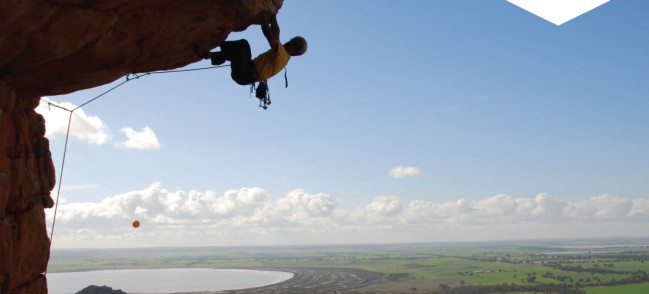One of South Africa’s most iconic climbers has directed his passions at researching the Cederberg’s iconic trees. Edmund February, associate professor in the Department of Biological Sciences at the University of Cape Town, has turned his attentions to the endangered cedar tree, the only tree species growing among fynbos and endemic to the Cederberg mountains.
Associate Professor February grew up in Cape Town. Classified as coloured, he was denied access to many facilities in the city, but not to the mountains or the public parks, and from an early age, he spent hours exploring Table Mountain. One thing led to another, from the hikes on Table Mountain he soon progressed to a more vertical world. While some of his friends were being pulled towards joining the gangs that have become a powerful social feature of the Cape Flats, he and his brother were developing their rock-climbing ability.
It wasn’t long before his abilities on the rock face became evident and he embarked on a semi-professional life as a climber. He was invited to participate in first ascents of vertical rock spires in many parts of Africa, from Namibia through Cameroon and Mali to Kenya. He has also climbed extensively in North America, Africa and Europe and worked on two climbing films for the BBC: one in the Cederberg and the other in Scotland.
One of South Africa’s most iconic climbers has directed his passions at researching the Cederberg’s iconic trees.
Parallel to Associate Professor February’s passion for climbing, he began to develop an interest in plants. Spending much of his time outdoors in the Western Cape, which is renowned for its unique and diverse fynbos flora, he became interested in the ecological diversity confronting him. Among his favourite local climbing spots are the Cederberg mountains, located in a provincial reserve just 200 km north of Cape Town. From the very first trips to the Cederberg some 40 years ago, Associate Professor February was fascinated by the iconic Cederberg-namesake, the Clanwilliam cedar (Widdringtonia cedarbergensis). The Cederberg Wilderness area was declared a provincial reserve in 1972 with the express purpose of protecting the trees.
Despite this protection, these trees are listed as an endangered species, threatened with extinction if the causal factors for its decline continue to operate. Another Widdringtonia species, the Mulanje cedar (Widdringtonia whyteii), which is the national tree of Malawi, is also threatened with extinction in the wild. Like the Clanwilliam cedar, the Mulanje cedar is endemic to a small mountain range, Mount Mulanje, about 150 km from Blantyre. The Mulanje cedar is much bigger than its South African cousin and the biggest danger it faces is from woodcutters.
In 2012, Associate Professor February was awarded a PERC grant for a comparative study of the South African and Malawian cedars, teaming up with colleagues from South Africa and Malawi, from within academia and outside it.
The project has two aims. The first is to establish the viability of current sapling initiatives by examining the health of seed stocks and their ability to regenerate: it is estimated that fewer than one in 1 000 seedlings will mature into a seed-producing tree.
The second feature is to explore the relationship between the trees and surrounding human populations. In both South Africa and Malawi, the tree is an important economic asset. In the Cederberg, it has been used to attract tourists, who provide labour and entrepreneurial opportunities to local communities. In Malawi, its wood is central to local economies because it is resistant to weather, rot and termite damage, and is therefore favoured for construction. While the tree faces different challenges in the two countries, it is important to attend to both the botanical and social dimensions of its place in Africa’s mountains.
Associate Professor February wants to ensure that the next generation of climbers will be able to appreciate the beauty of the African cedars and he hopes that his project will bring hope to local communities, while at the same time safe-guarding these beautiful trees.
Featured image: Associate Professor Ed February climbing Mount Arapiles.



Comments are closed.